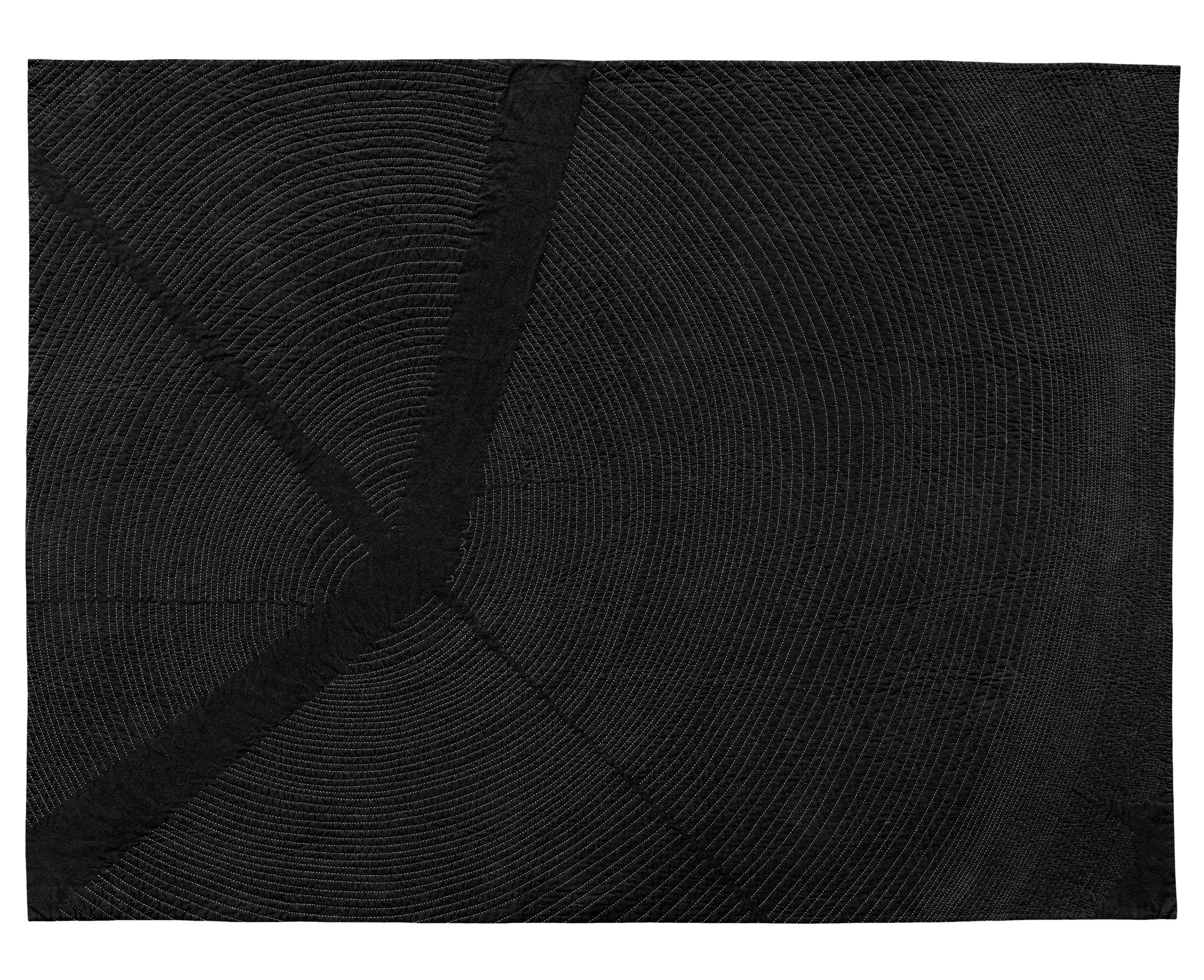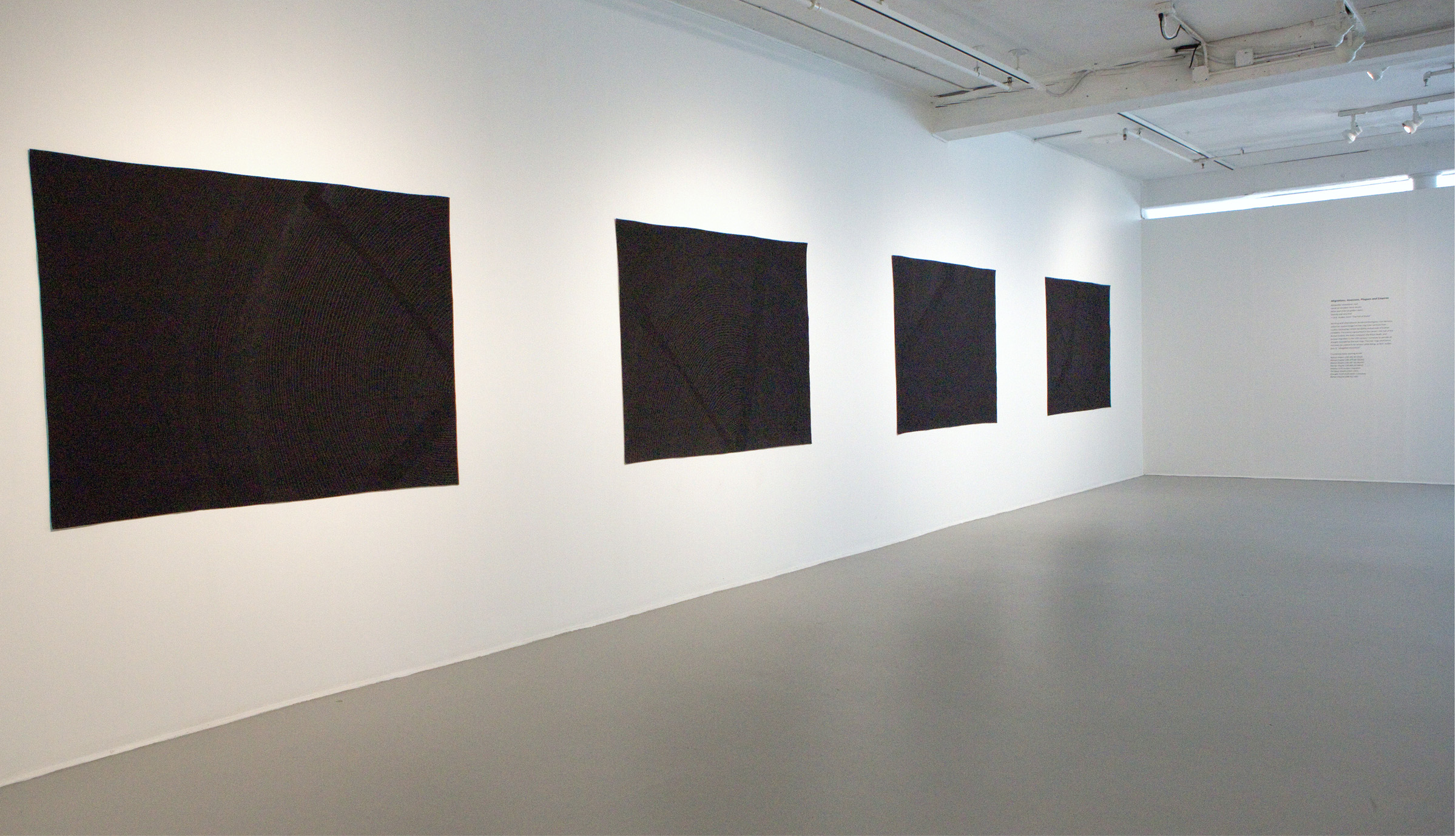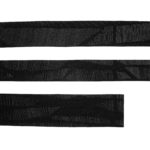Altogether elsewhere, vast / Herds of reindeer move across / Miles and miles of golden moss, / Silently and very fast.
—W.H. Auden, from “The Fall of Rome”
Working with international dendrochronologists, I culled source images of tree ring cross sections from studies connecting climate variability and periods of human instability. The events represented in this series—the Fall of the Roman Empire, Aztec Conquest, Black Plague, and Anasazi migration in the 12th century—correlate to periods of drought recorded by the tree rings.
The fading thread colors mirror and highlight historical events. For example, as the Roman Empire weakens and the Barbarian Invasions begin, white thread turns to grey then black as the tree ring density increases, corresponding to the drying period. The tree rings (and hence the life of the tree) are a stand-in for empire while being, as W.H. Auden puts it, “altogether elsewhere.”
***
I gained access to images of tree cross sections thanks to the generosity and support of four outstanding dendrochronologists each doing amazing work in their field:
Ulf Büntgen together with Daniel Nievergelt at the Swiss Federal Research Institute WSL; Jose Villanueva-Diaz at the National Research Institute of Forestry, Agriculture and Livestock, Gómez Palacio, Mexico; Pearce Paul Creasman, Laboratory of Tree-Ring Research, University of Arizona. All answered my endless e-mails with enthusiasm and receptivity. I cannot thank them enough.
Ulf Büntgen is the lead author of “2500 Years of European Climate Variability and Human Susceptibility” that became the spark for this series (published online in 2011 by the journal Science).





























